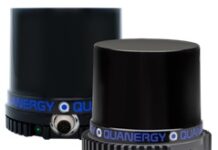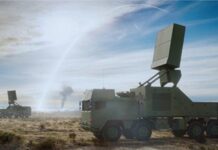
Theia’s latest family of lenses with patented Linear Optical Technology includes the company’s award winning MY23F lens which offers a 116° HFOV on a 1/1.8″ sensor without barrel distortion typical in wide-angle lenses.
The lens is NIR corrected for hyperspectral imaging from 435 – 940nm and provides 200lp/mm resolution. It is ruggedised in metal structure for shock/vibration resistance, and comes in a combination C/M12 mount for versatility. In the past year a new rectilinear lens giving a different ultra wide view without the barrel distortion or loss of edge resolution of fisheye lenses has been developed.
Most other wide angle lenses including fisheye lenses have barrel distortion which comes from imaging equal angular slices of the world onto the sensor. A close kin, similar in application but different design, is to image equal planar distances in the real world onto the image sensor using a rectilinear lens. Until recently, rectilinear lenses were not available for wide angle applications. Theia Technologies has worked to develop this type of lens, and has overcome the challenges of fisheye distortion using the company’s new Linear Optical Technology.
Rectilinear lenses keep straight lines in the real world straight on the image sensor. This creates an effect called 3D stretching or lean-over in which objects at the image edge seem to be stretched because they are being “flattened” onto a plane along the tangent angle from the lens. The wider the field of view (for rectilinear lenses), the more noticeable this effect. There is an additional benefit in increased resolution at the edges of the image because of 3D stretching.
The new line of individually calibrated lenses offers lens specific data sets for integration into image processing work streams. The information would include measured data about the specific lens, design data common across all lenses of the same model and meta data about the lens. The data available varies by model and could include features such as zoom/focus tracking curve for motorised lenses, MTF, distortion, and relative illumination.











